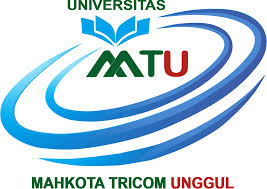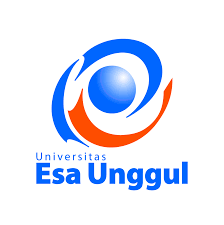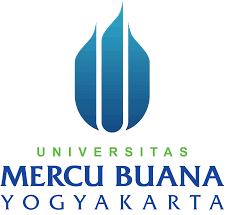The Numbers Game: Exploring Everyday Math Applications
DOI:
https://doi.org/10.55927/ijsmr.v3i1.10575Keywords:
Everyday Math Applications, Numeracy in Daily Life, Mathematics in the Modern World, Mathematics, Mathematics EducationAbstract
Mathematics is essential in everyday life and the modern world, yet its theoretical study in classrooms often needs more practical application, creating a gap in understanding. This study aims to bridge the gap between theoretical mathematics and real-world problem-solving by exploring how mathematical concepts can be applied in everyday life by everyday people. The study used a phenomenological research design and purposive sampling to explore the everyday applications of mathematics, interviewing 11 individuals from diverse backgrounds in Malaybalay City. The study reveals that mathematics is deeply embedded in everyday and professional activities and learned through authentic engagement. The result underscores the importance of contextualizing mathematical concepts to make them relevant and meaningful. Furthermore, the result emphasizes the need for an inclusive approach to mathematics education that integrates universal, practical, and culturally specific dimensions
Downloads
References
Adeoye‐Olatunde, O. A., & Olenik, N. L. (2021). Research and scholarly methods: Semi‐structured interviews. Journal of the American College of Clinical Pharmacy, 4(10), 1358-1367. https://doi.org/10.1002/jac5.1441
Allica, C., & Lunarb, B. (2024) Understanding patterns, quantifying relationships, and predicting the future with mathematics in the modern world: inputs to pedagogical innovation. Education & Learning Developing Nations, 2(1). http://doi.org/10.26480/eldn.01.2024.01.03
Antao, M. A., Morales, R. S., Ting, V. B., Abdurahman, J. T., Jalaidi, S. M., Kadil, H. L. S., ... & Verdeflor, R. N. (2024). Behavior shift through Non-Traditional math teaching strategies integrating Real-Life transactions for Non-Math enthusiasts. Environment and Social Psychology, 9(7). https://doi.org/10.59429/esp.v9i7.2642
Asahid, R. L., & Lomibao, L. S. (2020). Embedding proof-writing in phenomenon-based learning to promote students’ mathematical creativity. American Journal of Educational Research, 8(9), 676-684. https://doi.org/10.12691/education-8-9-9
Balaza, E. J. M., Diama, K. C., Torrenueva, J. L. A., Alicaya, A., Ortiz, M. N., & Inocian, R. B. (2021). Financial literacy integration in the K to 12 social studies curricula in the Philippines: Basis for a Contextualized COVID-19 Teaching Model. Psychology and Education Journal, 58(3), 802-813.
Berry, M. (2022) Narrowing the Gap Between Real-World Mathematics and the Didactic Approaches Used in Schools. TeachingTimes. https://www.teachingtimes.com/narrowing-the-gap-between-real-world-mathematics-and-the-didactic-approaches-used-in-schools/
Borba, M. C. (1990). Ethnomathematics and education. For the learning of mathematics, 10(1), 39-43. FLM Publishing Association. http://www.jstor.org/stable/40247974
Caraan, D. R., Dinglasan, J. K., & Ching, D. (2023). Effectiveness of realistic mathematics education approach on problem-solving skills of students. International Journal of Educational Management and Development Studies, 4(2), 64-87.
Carandang, E. S. P., Caguete, R. R., & Balmes, J. M. R. (2024). Attitude and Challenges in Learning Mathematics in the Modern World (MMW): Basis for Intervention Program. International Journal of Material and Mathematical Sciences, 6(3), 85-99. https://doi.org/10.34104/ijmms.024.085099
Chavez, M. B. B., & Lapinid, M. R. C. (2019). Improving Students' Motivation, Engagement and Performance in Mathematics through Real-Life Applications. Intersection, 13(1), 5-10.
Chitac, I. M. (2022). The rationale for saturation in qualitative research: When practice informs theory. Cross-Cultural Management Journal, 24(1), 29-35.
Cipriano, N.P. (2023). Revisiting Mathematics in the Modern World: Implications for Research and Practice. Journal for Educators, Teachers and Trainers, 14(3). 781-787, https://doi.org/10.47750/jett.2023.14.03.089
Galman, S. M. A., & Del Rosario, J. C. (2021). Linking Real-Life Situations with Classroom Assessment: Development of Real-Life Performance-Based Tasks in Business Mathematics. Journal of Applied Mathematics and Physics, 9(3), 485-502. https://doi.org/10.4236/jamp.2021.93034
Gravemeijer, K., Stephan, M., Julie, C., Lin, F.-L., & Ohtani, M. (2017). What Mathematics Education May Prepare Students for the Society of the Future? International Journal of Science and Mathematics Education, 15(S1), 105–123. https://doi.org/10.1007/s10763-017-9814-6
Indefenso, E. E., & Yazon, A. D. (2020). Numeracy level, mathematics problem skills, and financial literacy. Universal Journal of Educational Research, 8(10), 4393-4399. https://doi.org/10.13189/ujer.2020.081005
Lave, J., & Wenger, E. (1991). Situated learning: Legitimate peripheral participation. Cambridge university press.
Luzano, J. F. (2024). Multifaceted structures of mathematics education in the Philippines: a case analysis. Diversitas Journal, 9(3). https://doi.org/10.48017/dj.v9i3.3062
Mendiola, A. C., & Estonanto, A. J. J. (2022). Utilization of Instructional Materials Developed by the Mathematics Teachers in the Province of Sorsogon, Philippines. Asian Journal of Education and e-Learning, 10(3), 30-41.
Oppermann, K., & Spencer, A. (2022). Narrative Analysis. In Routledge handbook of foreign policy analysis methods (pp. 117-132). Routledge.
Österman, T., & Bråting, K. (2019). Dewey and mathematical practice: revisiting the distinction between procedural and conceptual knowledge. Journal of Curriculum Studies, 51(4), 457–470. https://doi.org/10.1080/00220272.2019.1594388
Pascual, L. E., & San Pedro, A. B. (2018). Post secondary students’ level of proficiency in solving real world problems in mathematics. Journal of Applied Mathematics and Physics, 6(1), 198-214. https://doi.org/10.4236/jamp.2018.61019
Pietilä, A. M., Nurmi, S. M., Halkoaho, A., & Kyngäs, H. (2020). Qualitative research: Ethical considerations. In: Kyngäs, H., Mikkonen, K., Kääriäinen, M. (eds) The Application of Content Analysis in Nursing Science Research, (pp. 49-69). Springer, Cham. https://doi.org/10.1007/978-3-030-30199-6_6
Posthuma-Coelho, A. (2016). Theoretical vs Practical Knowledge. Medium. https://medium.com/@amandaposthuma/theoretical-vs-practical-knowledge-86cab1113abd
Rahman, M. M. (2023). Sample size determination for survey research and non-probability sampling techniques: A review and set of recommendations. Journal of Entrepreneurship, Business and Economics, 11(1), 42-62.
Reyes, J., Insorio, A. O., Ingreso, M. L. V., Hilario, F. F., & Gutierrez, C. R. (2019). Conception and application of contextualization in mathematics education. International Journal of Educational Studies in Mathematics, 6(1), 1-18.
Riddell, R. (2024) Why don’t students like math? Here are 3 reasons. K-12 Dive. https://www.k12dive.com/news/why-dont-students-like-math-3-reasons/705357/
Roebber, P. J. (2005). Bridging the Gap Between Theory and Applications: An Inquiry into Atmospheric Science Teaching. Bulletin of the American Meteorological Society, 86(4), 507–518. https://doi.org/10.1175/bams-86-4-507
Roman, A. G., & Villanueva, R. U. (2019). Competency Acquisition, Difficulty and Performance of First Year College Students in Mathematics in the Modern World (MITMW). International Journal on Emerging Mathematics Education, 8(12), 2731-2736.
Skovsmose, O. (2021). Mathematics and crises. Educational studies in mathematics, 108(1), 369-383. https://doi.org/10.1007/s10649-021-10037-0
Torrejos, R. L. (2024). College Students’ Engagement in Mathematics in the Modern World: The Influential Role of Perceived Teaching Performance of Instructors and Critical Thinking Skills in a Blended Learning Environment. European Journal of Contemporary Education and E-Learning, 2(3), 74-89. https://doi.org/10.59324/ejceel.2024.2(3).07
Ucang, J. T. (2022). Practices of the Twenty-first Century Mathematics Teachers. International Journal of Applied Science and Research, 5(3), 225-230.
Uyen, B. P., Tong, D. H., Loc, N. P., & Thanh, L. N. P. (2021). The Effectiveness of Applying Realistic Mathematics Education Approach in Teaching Statistics in Grade 7 to Students' Mathematical Skills. Journal of Education and E-Learning Research, 8(2), 185-197. https://doi.org/10.20448/journal.509.2021.82.185.197
Verdeflor, R. N., & Pacadaljen, L. M. (2021). Outcomes of the Course Mathematics in the Modern World. Annals of the Romanian Society for Cell Biology, 25(1), 2044-2061.
Villamar, A. J., Gayagoy, M., Matalang, F., & Catacutan, K. J. (2020). Usefulness of mathematics subjects in the accounting courses in baccalaureate education. Mathematics and Statistics, 8(1), 27-31. https://doi.org/10.13189/ms.2020.080103
Vygotsky, L. S. (1978). Socio-cultural theory. Mind in society, 6(3), 23-43.
Wilson, A. (2015). A guide to phenomenological research. Nursing Standard (2014+), 29(34), 38-43. https://doi.org/10.7748/ns.29.34.38.e8821
Downloads
Published
How to Cite
Issue
Section
License
Copyright (c) 2025 Khurt Marcellin L. Rosell, Rey Anthony M. Baylon, Jherome G. Abellera, Evan P. Taja-on

This work is licensed under a Creative Commons Attribution 4.0 International License.




















